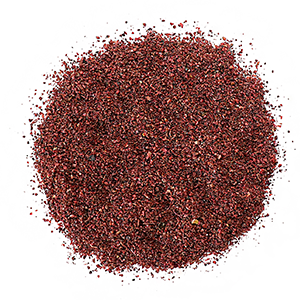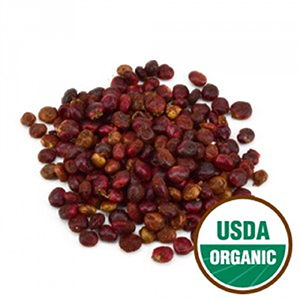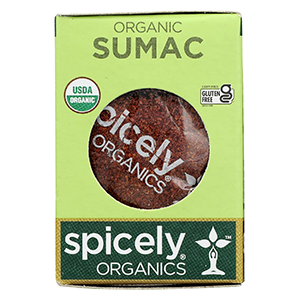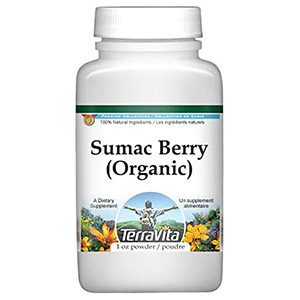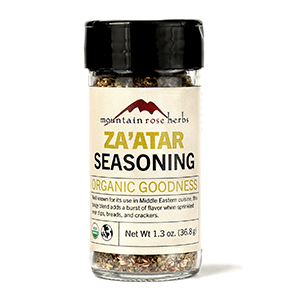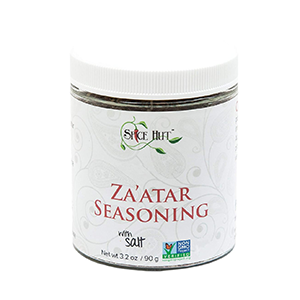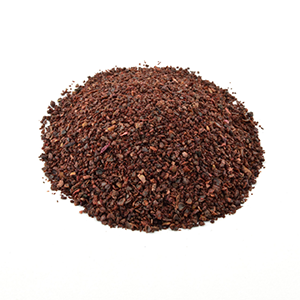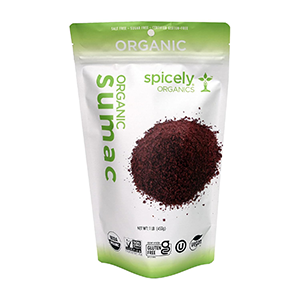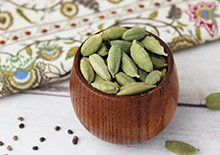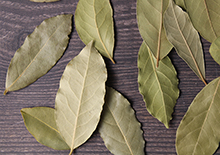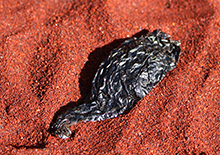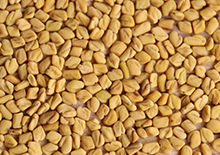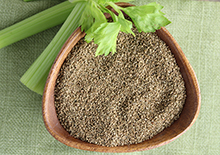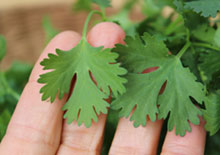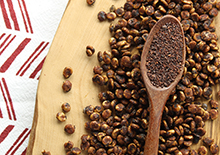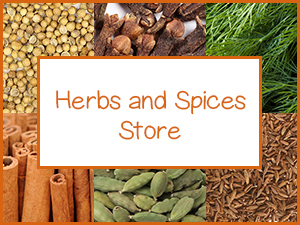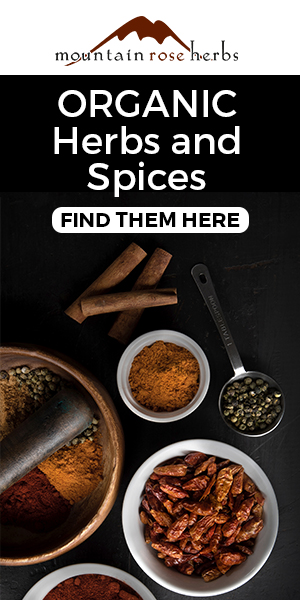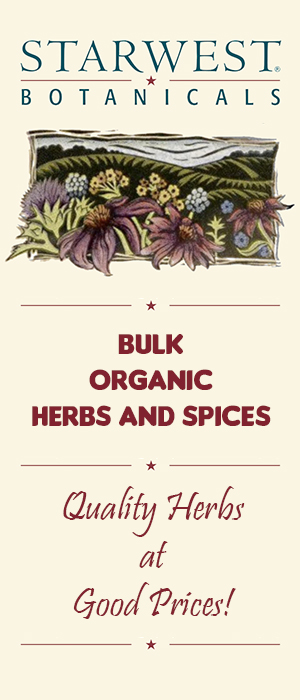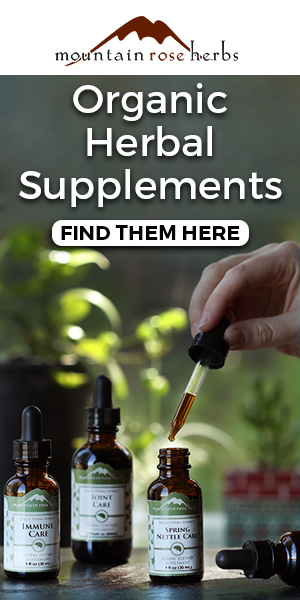- Home
- Herbs and Spices
- What is Sumac Spice
What is Sumac Spice? Unusual Properties and Culinary Uses
What is Sumac? | Taste | Texture | Cultivars | How Used | Color and Saltiness | About Za'atar | Culinary Traditions | Folk Use | Sumac Lemonade | Properties | Other Facts | Precautions | Shop
1) What is Sumac Spice?
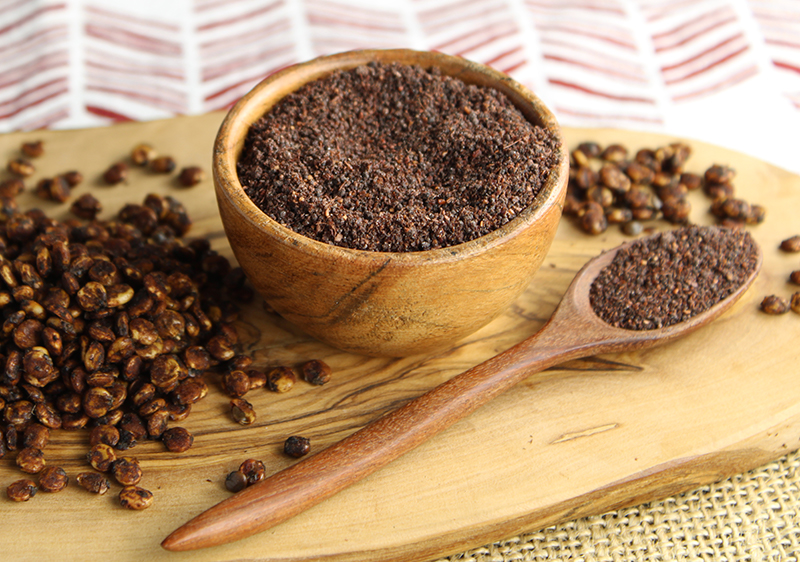
Sumac spice comes from the little reddish berries of the sumac bush that grow in dense clusters at the branch tips called bobs.
The red berry fruit is fuzzy and sticky when ripe with a thin flesh surrounding one seed.
After the whole berries are dried, they often turn a duller burgundy purple color and are ground to make the powdered spice called sumac.
2) Unique Taste of Sumac Spice
Table of Contents
What is Sumac? | Taste | Texture | Cultivars | How Used | Color and Saltiness | About Za'atar | Culinary Traditions | Folk Use | Sumac Lemonade | Properties | Other Facts | Precautions | Shop
Sumac is known for its unusual tangy citrus-like flavor which comes primarily from its MALIC ACID content. Its taste is frequently compared to the sourness of lemons.
When tasting straight sumac berry powder there is in fact a slight tart flavor with an undertone of sweetness, but also an astringency.
Some sumac spice products also have a saltiness depending on how they are prepared. More about that later.
3) What is Sumac Spice Made Of?
Another interesting yet unusual thing we discovered when reviewing sumac is that the spice is not just composed of the thin fruit but also the fibrous dense seed.
This gives the powder its coarser texture compared to other ground spices.
Oddly enough, the thin outer fruity flesh is where all the flavor is. The seed itself is flavorless.
4) Main Cultivars
The main two species of sumac used to make the spice are Rhus coriaria and Rhus typhina.
Rhus coriaria, also called Sicilian sumac, is native to the Mediterranean and is the one most utilized commercially to make sumac spice.
Turkey is the main commercial producer and exporter of Rhus coriaria sumac spice powder.
Rhus typhina or staghorn sumac is a North American species found in the Appalachian Mountains and other regions of Canada and the U.S.
Species of sumac grow also as a wild shrub in Mediterranean climates like Turkey, Iran,
Greece, Italy and North America.
We have personally witnessed a variety of sumac growing in the
deserts of Arizona, although it's more prevalent in the North Eastern states.
5) How Sumac is Used
Why might sumac be one to add to your list of herbs and spices?
The bold tart taste of sumac spice makes it an ideal substitute for lemon. Similar to salt, it is especially valued as a flavor enhancer of other foods it's spiced with and frequently utilized to elevate a dish.
For this reason, it's often used as a type of finishing spice sprinkled before serving a meal, salad, side dish or appetizer.
Sumac spic pairs well with savory foods and is traditionally used in meat rubs, marinades, dressings and dips. It is a meat tenderizer, an often-used seasoning when barbecuing and likewise appreciated for its ability to add freshness and balance to rich foods.
Sumac is sometimes combined with other spices such as paprika, allspice, hyssop, chili pepper, mint, black pepper, oregano and thyme.
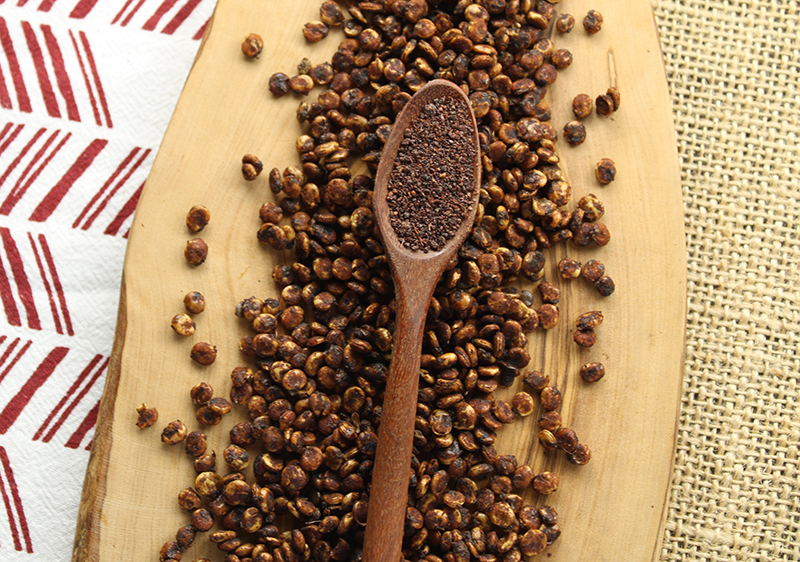
6) About Sumac Color and Saltiness
Unlike saffron or paprika which naturally pigment foods, sumac doesn't retain its color but turns a reddish-purple to burgundy-brown color when dried and ground.
Beware, however, that sometimes brands actually add natural or artificial coloring to their sumac to give it an exaggerated red pigment.
Another unusual yet common tradition is to cure the sumac in salt to preserve freshness. So, some sumac spice may also contain salt as an ingredient. It is therefore good to read labels if you're trying to avoid it.
Sometimes brands will also advertise "salt-free" or "no salt" on their product.
You can find sumac as dried whole berries but it is more commonly available as a ground spice because the whole berry, as mentioned, does contain a hard less palatable seed.
We were able to successfully grind down some organic sumac berries into a coarse powder and noticed they had a much stronger flavor than the pre-ground spice we purchased.
7) About Za'atar Seasoning
Sumac is one of the primary ingredients in the well-known Middle Eastern seasoning blend called za'atar.
While it usually always contains sumac and salt, it also consists of other ingredients, commonly toasted sesame seeds, thyme, marjoram, hyssop and/or oregano.
There are several different regional-specific variations however, some include fennel, coriander and cumin.
It is also known that home cooks throughout the Middle East also make their own unique homemade za'atar seasoning blends.
What is za'atar seasoning used for? Its tangy, nutty and herbal flavor is often mixed into olive oil, baked into breads, rubbed on meats or used as a topping with meals.

8) Culinary Traditions of Sumac
The culinary history of sumac dates way back to the Roman empire and is consequently a well-established spice in the regions surrounding the Mediterranean Sea.
Sumac is often denoted as a "secret ingredient" adding depth and tanginess to many Middle Eastern recipes. It is a standard spice rack staple in countries like Turkey, Lebanon, Armenia, Syria and Iran.
It's used in the Iranian shirazi salad, the Lebanese fattoush, the Palestinian dish called musakhan and a sauce used in Syrian kebbeh sumakiyeh ("sumak"-iyeh).
Sumac is a commonly sprinkled spice topping on hummus, kebabs, baba ganoush, stews and mezes (side-dish appetizers).
9) Medicinal Folk Use
Wild sumac berries, bark, roots and leaves have been used by indigenous peoples all over the world for a number of issues ranging from diarrhea to asthma. (*)
In some reports, sumac berries were ground as a flour and used in soups but also valued for their anti-inflammatory qualities useful "medicinally as a restorative for inactive stomaches [gastritis]".
As natural sources of vitamin C and vitamin A, dried sumac berry or powder is sometimes used with elderberries by herbalists when making herbal syrups as a cold remedy.
10) Sumac Lemonade
Long before lemons or citrus fruits were brought to the New World by the Europeans, native peoples in North America used sumac.
The main four Rhus species in this region are R. ovata, R. integrifolia, R. trilobata and R. microphylla.
According to the book Temalpakh, the Cahilla Indians of the American Southwest called sumac nakwet or "lemonadeberry".
Fresh or dried berries were commonly infused in water and served as a type of thirst-quenching lemonade, providing relief from the hot dry desert environment they lived in.
Homemade sumac lemonade is also a tradition in many parts of the world where sumac grows wild. (Try making your own with dried berries and hibiscus.)
11) Nutraceutical Properties
Healthwise, one of the benefits of sumac spice is that it is a source of antimicrobial and antioxidant polyphenols and flavonoids. These are nutraceutical components that can support anti-inflammatory activities. Some of these include gallic acid, quercetin, kaempferol and tannins.
Along with other anti-inflammatory herbs and spices, like turmeric, sumac can be another option to consider. Adding a dash or two to meals can be an easy way to get more into the diet.
In some research on sumac (Rhus coriaria), it was suggested useful against gastritis inflammation.
Other studies using dose-specific amounts show its potential for alleviating muscle pain (*), regulating blood sugar (*) and balancing cholesterol levels. (*)
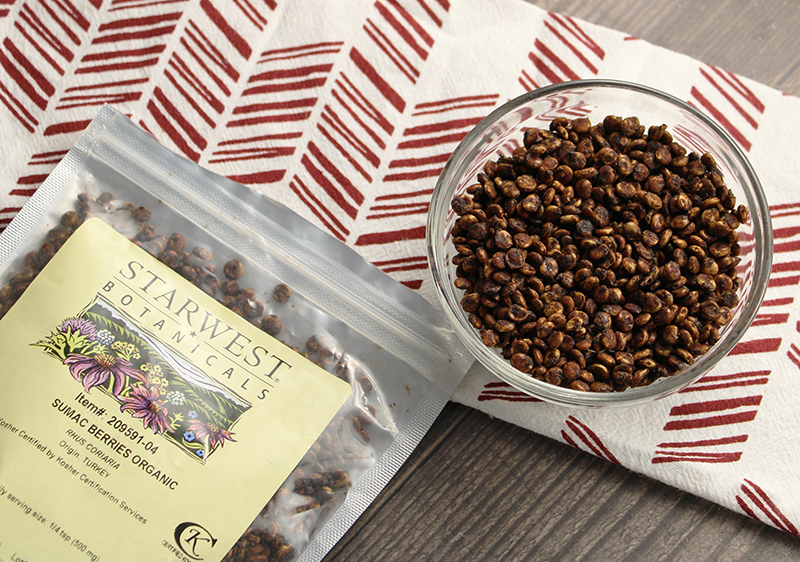
Other Facts About Sumac
1) Sumac Related Species
Interestingly, sumac species are in the same family as cashews, mangos and pistachios, often referred to as the "cashew family" or "sumac family".
They are also in the same genus as poison oak (Rhus diversiloba) and poison ivy (Rhus radicans).
2) WHat is Poisonous Sumac?
There is a poisonous sumac that many people warn about. However, it is only a concern if you happen to be wild harvesting the fruit.
The biggest difference, appearance-wise, between Poison sumac (Rhus vernix) and edible sumac is the berry color.
Poisonous sumac berries are always white with drooping bobs whereas true culinary sumac berries are always a reddish color with more vertical bob clusters.
Poisonous sumac also grows in swampy environments of North America, not arid dry or temperate locations.
What can happen to you if you consume the poisonous variety? Usually, severe allergic reactions can develop from the urushiol compound, also found in poison ivy.
3) Etymology of Sumac
The term sumac is said to come from the Arabic word "summaq" meaning "dark red", obviously referring to the ripe berry fruits.
4) Industrial Uses
The bark, berries and leaves of the sumac plant have been used to make clothing dyes ranging from red and yellow to black and brown.
The tannins concentrated in the sumac leaves and barks were once utilized in tanning leather hides.
5) Sumac Bobs for Beekeeping
Beekeepers around the world in sumac-growing locations use dried sumac branches with bobs as a fuel source for their beehive smokers.
6) Invasive Shrub Species
Sumac shrubs are sometimes considered an invasive species. (Source) That's because they are easily spread by seed as well as propagate by shoots coming off their extensive root systems which can form large colonies.
Like poison oak, it is very hard to remove once it has established in an area.
Precautions:
Sumac powder from edible berry species is considered safe to consume as a food spice but should be avoided if you have allergic reactions to cashews or mangos. It is best to consult your health care professional before using it if you are pregnant, nursing, have a serious medical condition or if you are taking any medications.
Shop Related Products (About Affiliates & Amazon Associate Paid Links)
Affiliate Disclaimer: This section contains affiliate product links. If you make a purchase through our recommended links, we receive a small commission at no additional cost to you. Thanks for the support.


